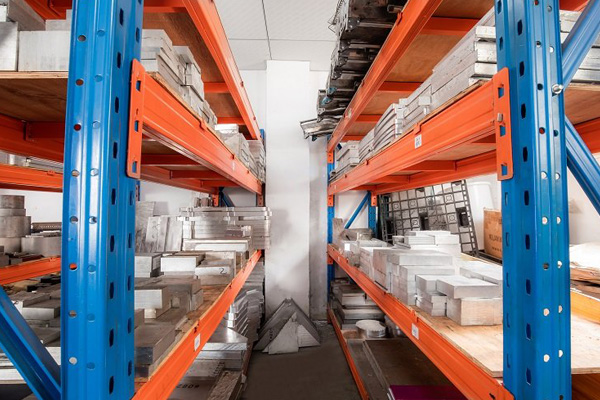The method for mirror polishing copper involves material selection, rough grinding, fine grinding, polishing, cleaning, and rust prevention.
1. Material Selection
For mirror polishing copper, you need to choose suitable materials, including polishing powders, wax, and cotton. Select fine-grit aluminum oxide or silicon carbide powder for achieving a mirror finish. Choose moderately hard polishing wax for both rough and fine grinding, and opt for soft polishing cotton for the actual polishing process.

2. Rough Grinding
Rough grinding is the first step in mirror polishing copper. Its purpose is to remove oxidation layers, impurities, and rough areas on the copper’s surface. Start by wetting the copper surface, then apply an appropriate amount of polishing wax and use cotton to rub the copper’s surface. Apply moderate pressure for about one minute. After rough grinding, the copper surface should be free of noticeable scratches and impurities.
3. Fine Grinding
Fine grinding is the second step in mirror polishing copper. It aims to further smoothen the copper surface and eliminate scratches and protrusions left from rough grinding. Wet the copper surface again, apply an appropriate amount of polishing wax, and use cotton to gently rub the copper’s surface for about one minute. After fine grinding, the copper surface should be free of noticeable scratches and protrusions.
4. Polishing
Polishing is the third step in mirror polishing copper. Its main goal is to achieve a mirror finish on the copper surface. Wet the copper surface, evenly apply a suitable amount of aluminum oxide or silicon carbide powder, and use soft polishing cotton for polishing. Apply gentle pressure for about two minutes. After polishing, the copper surface should exhibit a mirror-like finish with no noticeable scratches or protrusions.
5. Cleaning
Cleaning is the final step in mirror polishing copper. Its purpose is to remove any remaining polishing materials and dirt from the copper surface. Start by selecting an appropriate cleaning agent, wetting the copper surface, and using a soft cloth to wipe the surface clean, removing any residual polishing materials and dirt. After cleaning, the copper surface should be clean and free of noticeable residues.
6. Rust Prevention
Rust prevention is a crucial step in mirror polishing copper to prevent surface rust and oxidation. First, wipe the copper surface clean. Apply an appropriate amount of rust prevention paint. After the rust prevention paint has dried, apply an adequate amount of rust prevention oil to enhance its effectiveness. After rust prevention treatment, the copper surface should be smooth and free of rust marks or oxidation.
Conclusion
Mirror polishing copper involves several steps, including material selection, rough grinding, fine grinding, polishing, cleaning, and rust prevention. Each step requires careful consideration of materials and techniques to ensure a smooth, impurity-free, and oxidation-free copper surface. Polished copper surfaces exhibit a clear and bright finish, enhancing overall decorative effects and user experience.

What Are the Techniques for Mirror Polishing Copper?
The techniques for mirror polishing copper include:
Preparing Tools and Materials: You need essential polishing tools and materials, such as sandpaper, polishing pads, polishing heads, cleaning agents, and clean water. Additionally, consider auxiliary tools like a turntable for better polishing.
Mechanical Polishing: This method involves removing protrusions from the surface through cutting and plastic deformation. It primarily uses tools like oil stones, wool wheels, and sandpaper, typically applied manually. For complex surfaces like rotating parts, auxiliary tools such as turntables can be used. Ultra-precision grinding can achieve surface roughness as low as Ra0.008μm. It offers advantages of high efficiency, low cost, and high precision.
Chemical Polishing: This method prioritizes dissolving micro-protrusions over micro-depressions on the material’s surface in a chemical medium to achieve a smooth surface.
During the copper mirror polishing process, careful adherence to operational steps and details is essential to ensure the quality and outcome of the mirror-polished copper surface.
How to Select Suitable Polishing Tools and Materials for Different Materials?
The choice of suitable polishing tools and materials for different materials depends on various factors, including hardness, chemical composition, and microstructure.
Hardness: The hardness of materials varies, and materials with higher hardness yield a higher gloss and smoother surface after polishing. For example, materials like steel with higher hardness can achieve better gloss and surface smoothness after polishing compared to softer materials like aluminum alloys.
Chemical Composition: Different materials have different chemical compositions, and this affects the choice of polishing compounds and abrasives used during the polishing process. For instance, stainless steel contains chromium, which enhances corrosion resistance and aesthetics. However, specific polishing compounds must be selected to avoid scratching and surface oxidation during polishing.
Microstructure: The microstructure of materials, including crystal and molecular structures, can impact the polishing results. Some high-polymer materials exhibit molecular motion during polishing, leading to phenomena like orange peel or ripple patterns.
Therefore, when selecting polishing methods and materials, it is crucial to consider factors such as the material’s hardness, chemical composition, microstructure, and specific polishing requirements to achieve the best polishing results. Different materials may require distinct polishing techniques, processes, and equipment to ensure quality and production efficiency.
Looking for a Reliable CNC Machining Factory
Are you searching for a suitable CNC machining manufacturer? Consider CNCMF CNC Machining Factory for assistance.
With 13 years of expertise in custom CNC machining and surface treatment services for metals such as copper, stainless steel, aluminum, titanium, and more, our professional engineering team can help you select the right CNC machining processes and surface treatments. This reduces your production costs and meets your requirements to high standards. To get a project quote, simply upload your CAD files to our email: [email protected].